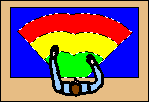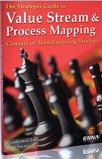What Is Motion Economy?
 Motion
economy helps achieve productivity and reduce Cumulative Trauma at the workstation or sub-micro
level. The Principles of Motion Economy eliminate wasted motion, ease operator tasks, reduce
fatigue and minimize cumulative trauma such as Carpal Tunnel and tendonitis. Motion
economy helps achieve productivity and reduce Cumulative Trauma at the workstation or sub-micro
level. The Principles of Motion Economy eliminate wasted motion, ease operator tasks, reduce
fatigue and minimize cumulative trauma such as Carpal Tunnel and tendonitis.
Ralph M. Barnes codified these principles in the 1930's. They are still valid. Workstation
designers should memorize them.
Lean Manufacturing & Motion Economy
Shigeo Shingo and
Taiichi Ohno both had a thorough grounding in
basics such as motion economy. Shingo used it in his
SMED work and for workstation design. Ohno
ensured that the concepts were applied throughout Toyota and its supplier system.
The Western world pretty much forgot about Motion Economy in the rush to computerization of
the 1960's and 1970's.
In Lean Manufacturing the Toyota Production System (TPS) was
re-introduced as Lean Manufacturing, Motion Economy was often left behind.
|
Limitations of Motion Economy
Motion economy has limitations. It does not account for physical limitations or differences
in operators. Moreover, a movement that appears ineffective from a motion economy perspective
actually may prevent fatigue and possible injury from static posture loading. However, using
them alongside Principles of Ergonomics and a rationalized design procedure will ensure a
productive, safe and optimum workstation.
Body Segment Classes
The principles are, for the most part, self- explanatory. However, Body Segment Class needs
elaboration. In the table, each movement after class 1 involves body parts from the previous
class(es), and more of the body participates in the motion.
Tasks should have the lowest possible motion class. To do this, place the most frequently
grasped objects near the operator. In addition, items should be close together, lightweight, and
easily positioned at the end of the motion.
References
BARNES, RALPH M., Motion and Time Study, Second Edition,
John Wiley & Sons, New York, 1940.
|





